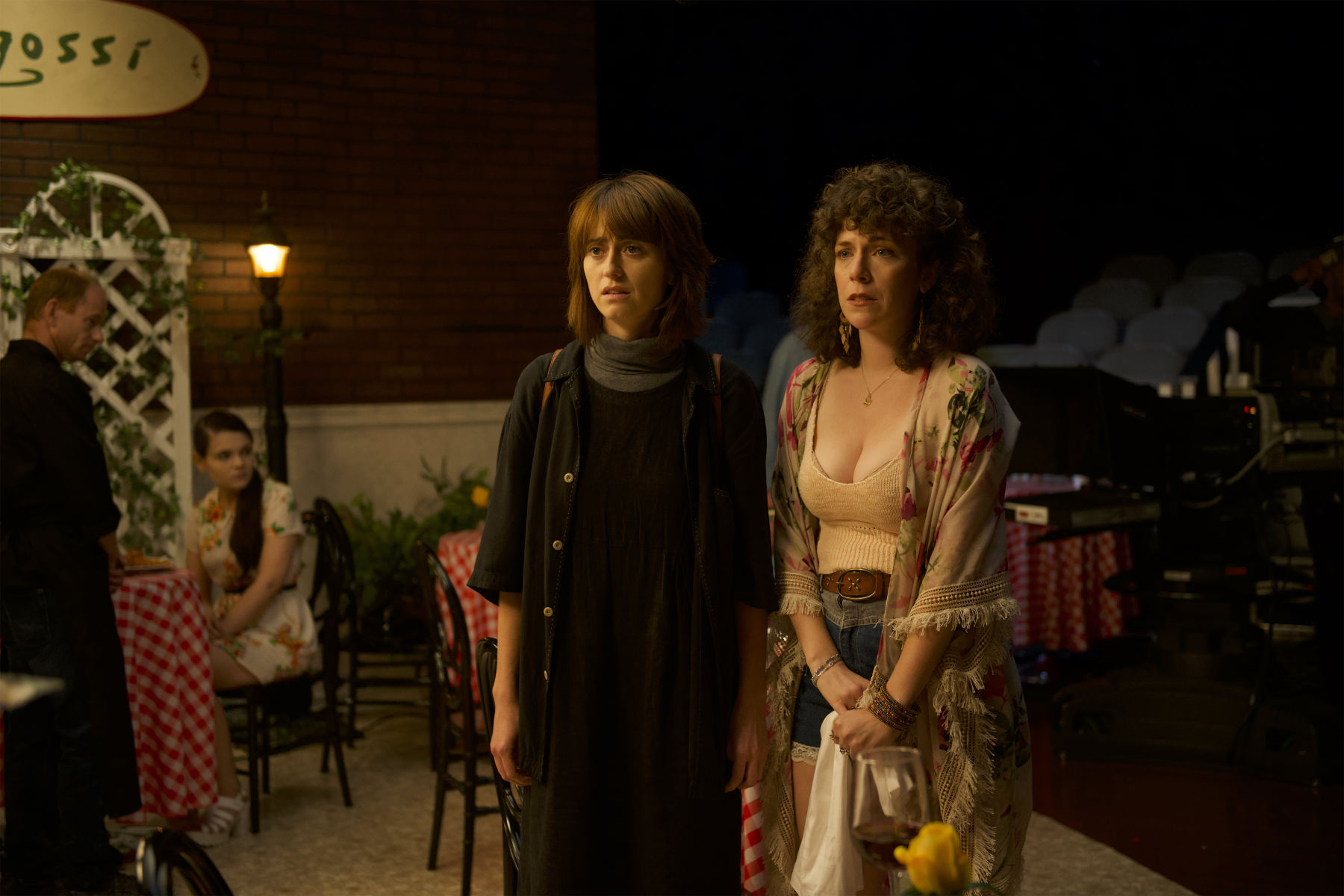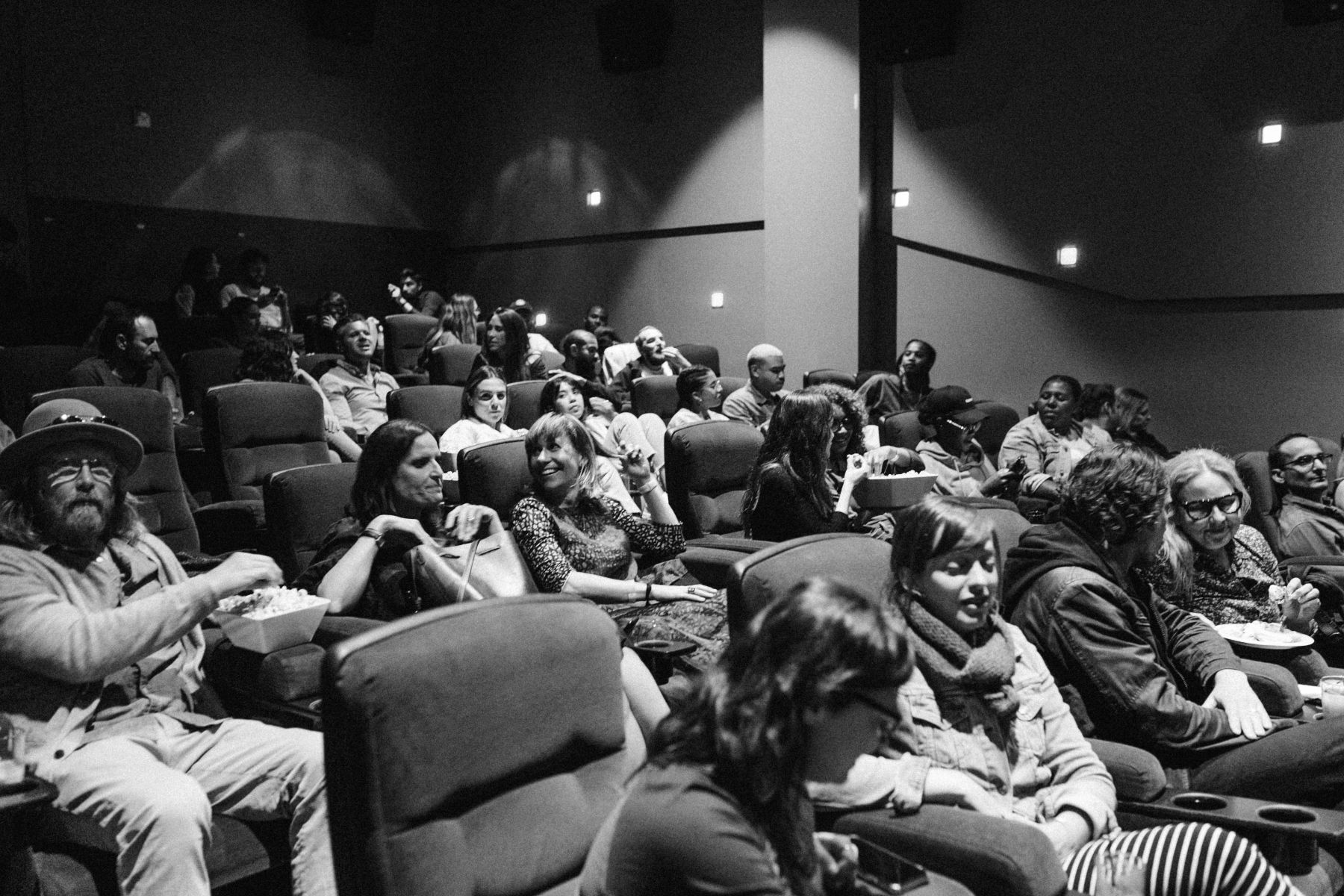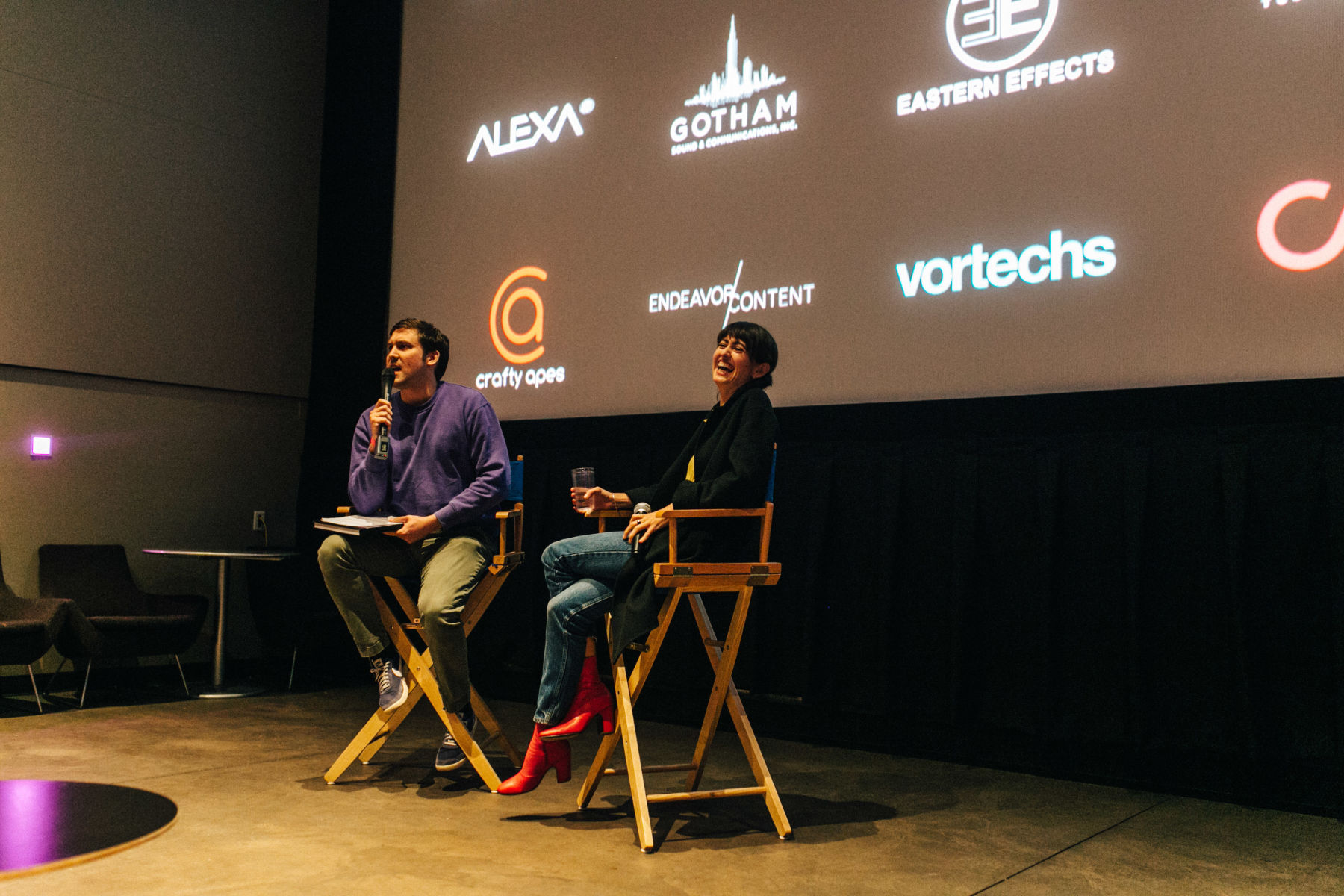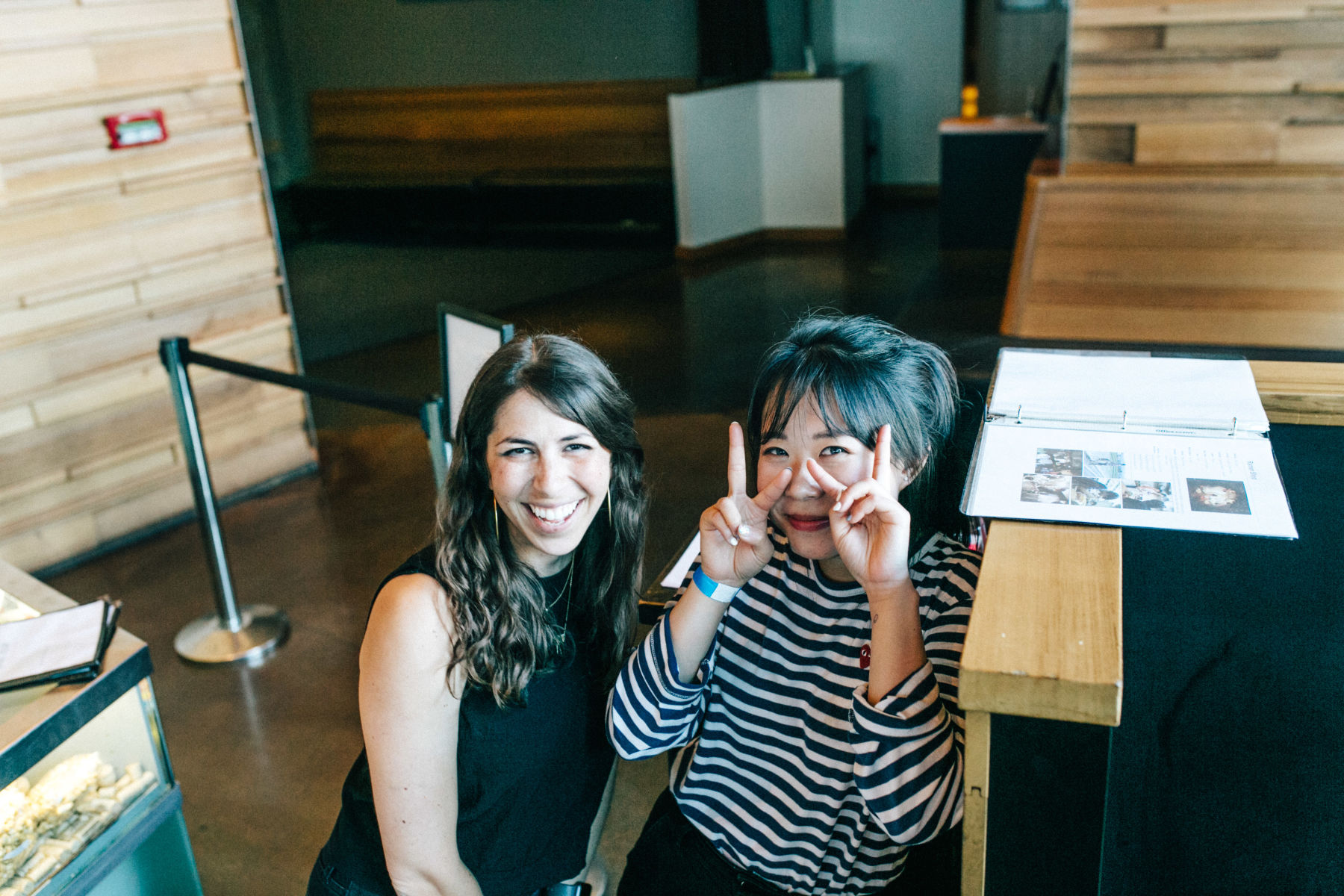Mike: What was the initial seed of an idea for this film? And could you talk a bit about moving from this initial thought to the script that you ended up shooting?
Hannah: Jen [Tullock] had the idea of sisters who find out the mother they thought died when they were young is alive and on TV. The challenge then became grounding that larger-than-life premise in an emotional reality we felt the characters deserved.
This is a project that in many ways framed both me and Jen’s friendship and our careers. It was the impetus for everything we made together and most of what we made apart, so a lot of our journey as two codependents seeking independence as a team wound up in the movie. (It makes sense; ask our therapist.) Then the Sundance labs gave us the final push toward figuring out the heart of our story. I realized there was this big sinkhole where Rachel should have been because I was terrified of owning the material and my role in it, which ultimately unlocked the secret to Rachel’s arc (and kind of the theme of the whole movie). We also met Judith [Light] at the labs, and her insight into Sherrell was instrumental in figuring out who that woman was and the effect her absence and then sudden reappearance had on everyone else in the movie.
Mike: Given that you cowrote, directed, and acted in this film, how did these different roles interact with each other and cause the film to evolve?
Hannah: It was helpful to be able to deliver rewrites for myself whenever I needed them, but on the other hand, I do think knowing that was an option cut into my prep time as a director. As far as directing myself, I found it hard to give myself the same care I gave the other actors—which was dumb, because I was still the lead, but maybe it was helpful because I was overlooking myself the same way my character overlooks herself in the movie? Maybe? The benefit of being an actor as well as the director was that I think it created a feeling of us all being in it together, which was helpful for telling a story about family.





